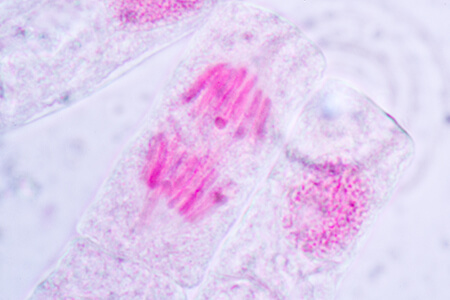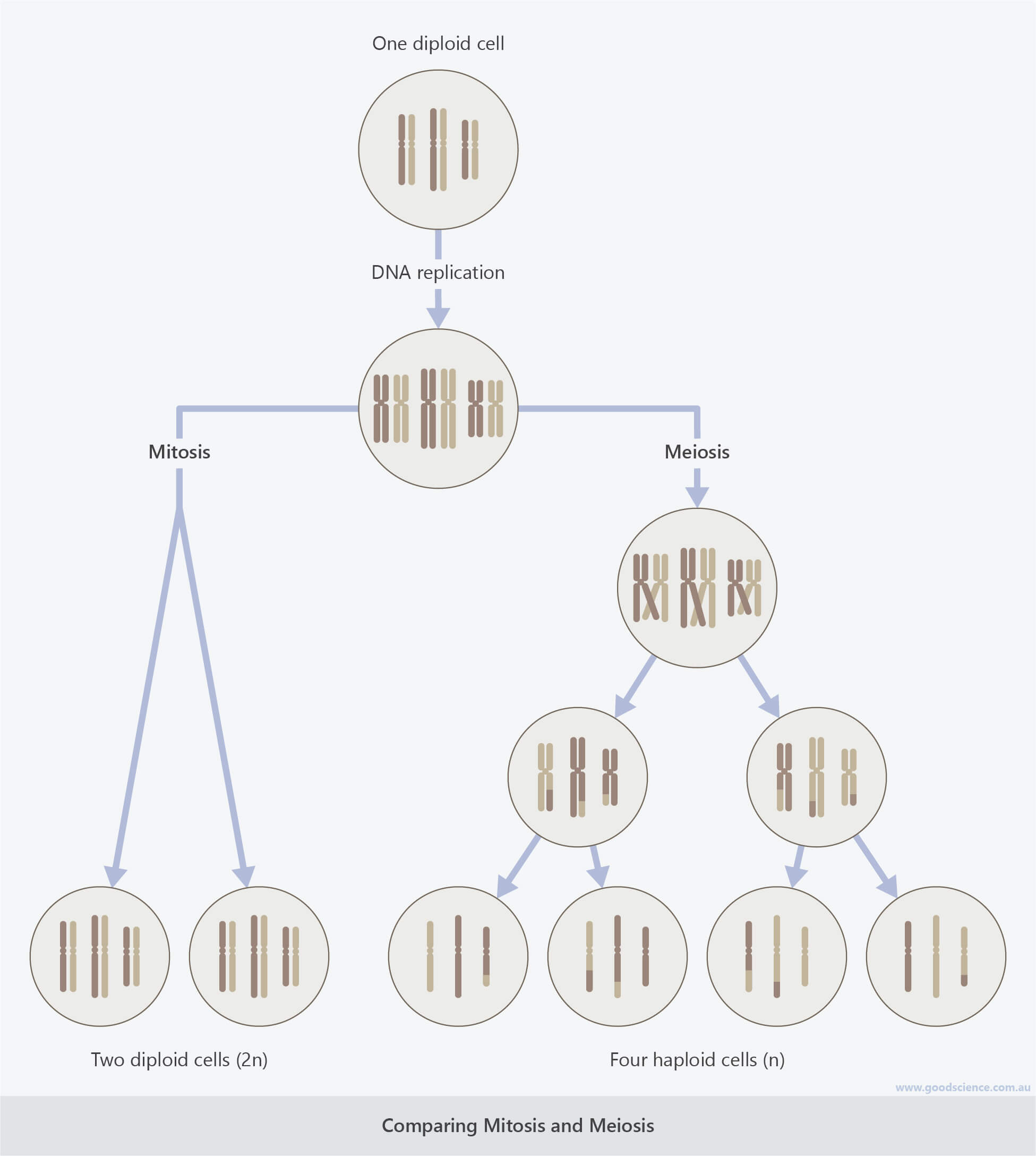This is a lesson summary. The full lesson can be viewed by purchasing an online course subscription.
Learning Objective
In this lesson we will learn about the two types of cell division – involving either mitosis or meiosis – and the process of DNA replication which takes place prior to both.
Learning Outcomes
By the end of this lesson you will be able to:
- Explain why cell division takes place.
- Describe the process of DNA replication and explain why it takes place prior to cell division.
- Describe the process of mitosis, where it occurs and the types of cells it produces.
- Describe the process of meiosis, where it occurs and the types of cells it produces.
- Compare and contrast the processes of mitosis and meiosis.

(Image: sinhyu, Adobe Stock)
Lesson Summary
- Cell division (cytokinesis) produces two daughter cells from a parent cell.
- Cell division for growth involves mitosis and the replication of body cells (somatic cells).
- Cell division for reproduction involves meiosis and the production of gametes (sex cells).
- DNA replication produces two daughter DNA molecules from a parent DNA molecule.
- Duplicated chromosomes consist of sister chromatids joined at the centromere.
- DNA replication takes place before mitosis and meiosis.
- Mitosis involves one round of division, resulting in two diploid cells that are genetically identical to the parent cells.
- Meiosis involves crossing over and two rounds of division, resulting in four haploid cells that are genetically unique.

(Header image: sinhyu, Adobe Stock)
